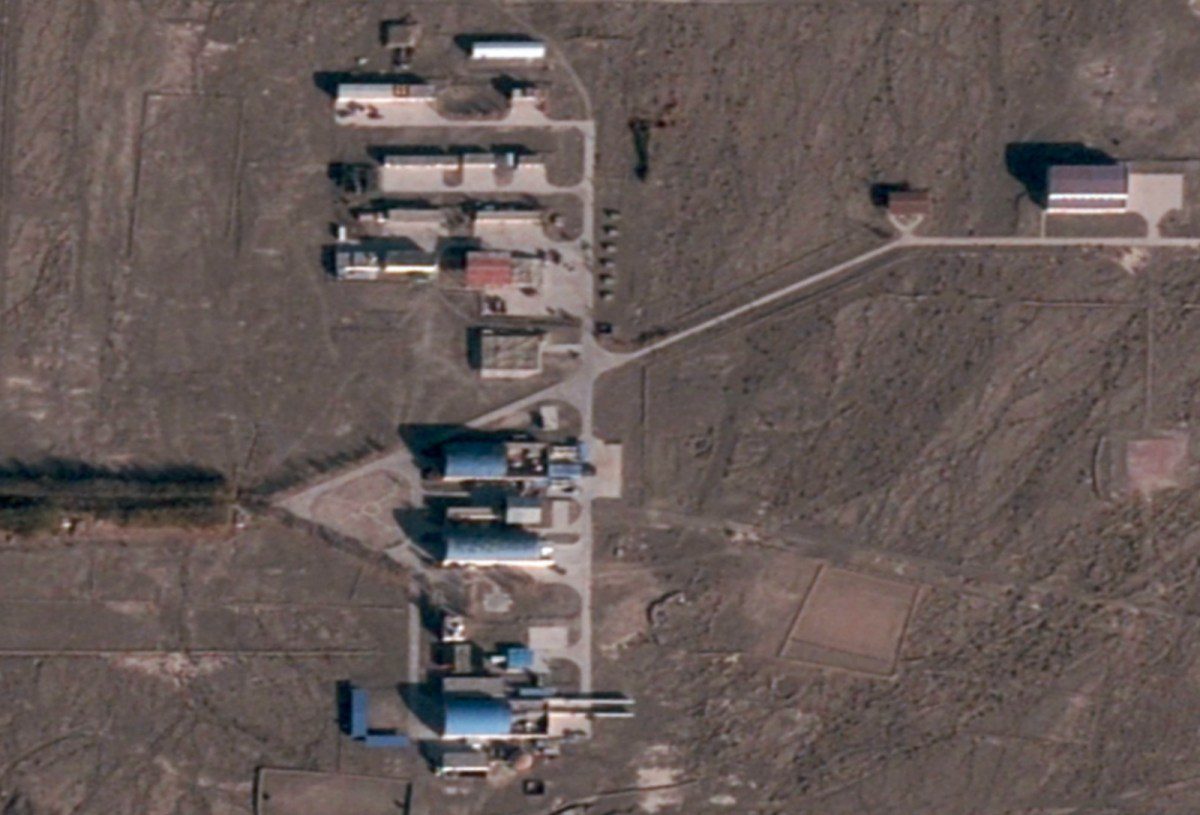Global Courant 2023-05-03 10:03:04
China may be building anti-satellite lasers on the ground at its secret Korla facility in western Xinjiang, weapons that could aim to hide its sensitive military satellites from the prying eyes of foreign spy satellites.
Army technology reported that satellite images from China’s Korla East Test from geospatial intelligence firm BlackSky show two laser gimbals housed in hangars with retractable roofs that open around noon when foreign imaging satellites are most active.
In addition to ground-based anti-satellite lasers, Army Technology mentions that the Korla site houses electromagnetic pulse and aerostat facilities.
The report says Korla’s satellite images show huge anti-satellite lasers nearly the size of ship-mounted weapons next to domed structures that likely contain gas needed for the lasers to work.
China built the Korla site in 2003, but much of its activity since 2005 remains undocumented. Korla is operated by Unit 63655 of the People’s Liberation Army – Strategic Support Force (PLA-SSF), which is responsible for research into lasers and optics, very large stratospheric airships, and powerful microwaves.
In a December 2022 article for Arms Control Wonkwrites Eli Hayes of China’s Bohu facility in Xinjiang, which satellite images suggest may have been built in 2002 and commissioned in 2004, suggesting China’s anti-satellite laser program may be two decades old.
Like Korla, Hayes notes that Bohu conducts research on lasers and optics, giant stratospheric airships and powerful microwaves and that Unit 63655 of the PLA-SSF manages the facility.
In a separate articleHayes mentions that satellite images show the Bohu site has fixed lasers for distance measurements and mobile truck-mounted lasers for dazzling.
These developments, Hayes says, suggest that China has reached limited capability in anti-satellite-guided energy weapons technology. However, he warns that such assessments should be taken with a grain of salt due to a lack of information and the unproven effectiveness of lasers in anti-satellite operations.
China is not alone in building dedicated ground facilities for anti-satellite warfare. Last July, Global Courant reported on Russia’s Kalina laser facility, which operates in the Caucasus and aims to blind the optical sensors of other countries’ spy satellites by flooding them with laser light.
The great power race has begun to develop laser weapons. Image: Twitter
The Kalina facility operates in infrared pulse mode by producing 1,000 joules per square centimeter, delivering a large percentage of the light it makes to low Earth orbits where spy satellites operate.
Using a telescope several meters in diameter, Kalina can target an above-ground satellite for hundreds of kilometers, shielding an area of 100,000 square kilometers from spy satellites.
However, Kalina has an unclear operational status, as sanctions since 2014 may have hindered the import of required sensitive electronics. Unprecedented sanctions imposed on Russia following its invasion of Ukraine last February may have exacerbated the situation.
Zhenhua Liu and other writers take note in a 2020 article published in the Journal of Physics: Conference Series that a ground-based laser can precisely target specific points on low-Earth orbit satellites to knock them out or destroy them through thermal damage.
Liu and others note that ground-based lasers can temporarily blind or permanently disable optical sensors on satellites, burn out their solar panels or cause satellite electronics to overheat.
They also say that space powers such as China, Russia and the US have extensively tested anti-satellite lasers and now have preliminary operational capabilities. They note that ground-based lasers have size, coverage and power advantages over airborne and satellite-based weapons.
The difficulty in distinguishing between a satellite’s careless launch and a deliberate attack makes it challenging to respond to potential ground-based laser interference against satellites.
Yousaf Butt notes in a 2008 article in the peer-reviewed journal Science and Global Security that while laser satellite ranging is a common technique for determining the orbits of space objects with high accuracy, there is a small possibility that satellite ranging lasers could damage sensitive optical sensors, with such a incident with the potential to be misinterpreted as an attack.
Chris Zappone notes in an August 2021 article for The Sydney Morning Herald that ground-based anti-satellite lasers could also be used to conceal sensitive military facilities such as nuclear missile silos. Such laser-protected naval and air bases could be used as staging areas for an invasion of Taiwan, the writer suggests.
Zappone also notes other advantages of ground-based anti-satellite lasers, such as the ability to destroy satellites while being scalable and plausibly negotiable. He cites the difficulty of attributing a blinding ground laser strike to a satellite orbiting hundreds of miles above Earth at thousands of miles per second, as a satellite’s temporary failure could be an accident or the result of hard-to-detect aggression.
However, he warns that interference with satellites, especially those for missile defense, could be interpreted as a prelude to a nuclear attack, leading to unintentional escalation and possible disaster.
Zappone notes that satellites now serve as the nerve centers of modern military operations, as well as many civilian functions such as navigation, weather forecasting and space-based timing for financial transactions, meaning the damage from ground-based laser strikes on satellites can create ripple effects. outside military applications.
Similar:
Loading…




